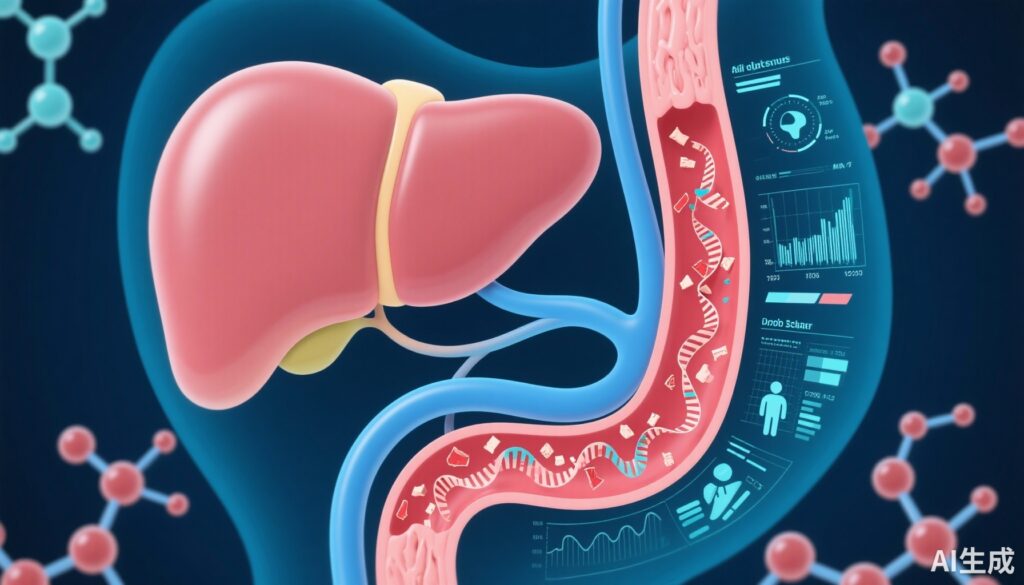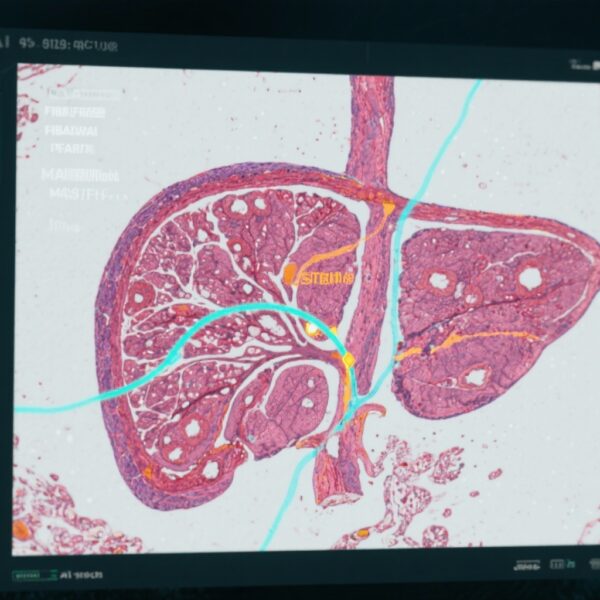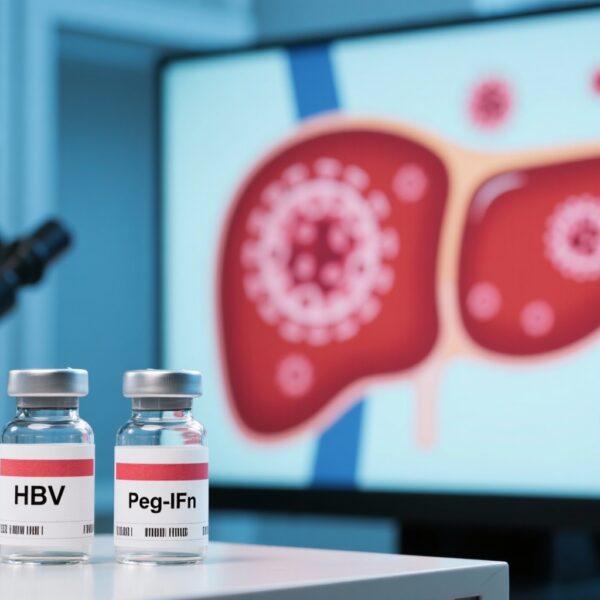Highlight
- Longitudinal ctDNA monitoring after resection of extrahepatic cholangiocarcinoma (eCCA) strongly predicts recurrence risk during adjuvant therapy.
- CtDNA positivity at various timepoints—pre-treatment and on-treatment—correlates with significantly inferior disease-free survival.
- Personalized tumor-informed ctDNA assay outperforms conventional serum biomarkers like CA19-9 and CEA in prognosticating recurrence.
- Integration of ctDNA dynamics into clinical decision-making may allow tailored adjuvant chemotherapy strategies, potentially improving patient outcomes.
Study Background and Disease Burden
Extrahepatic cholangiocarcinoma (eCCA) represents a challenging biliary tract malignancy with a poor prognosis, even after curative-intent surgical resection. Surgery remains the sole potentially curative option, but high rates of postoperative recurrence severely limit long-term survival. Adjuvant chemotherapy (ACT) aims to reduce recurrence risk; however, clinical decisions are often complicated by the lack of accurate, early biomarkers to identify patients at highest risk for relapse or to monitor treatment response effectively.
Traditional biomarkers such as cancer antigen 19-9 (CA19-9) and carcinoembryonic antigen (CEA) have limited sensitivity and specificity in predicting recurrence in eCCA. Therefore, there is a pressing unmet need for robust molecular tools that can detect minimal residual disease (MRD) and inform personalized adjuvant treatment strategies.
Study Design
The STAMP trial is a randomized, controlled study comparing adjuvant gemcitabine plus cisplatin (GemCis) versus capecitabine (CAP) in 101 patients with resected eCCA. Patients were randomized equally to receive either regimen. The present biomarker substudy included a cohort of 89 participants from whom serial plasma samples (n=254) were prospectively collected at critical therapeutic timepoints: after surgery before ACT initiation, and during ACT at 12 and 24 weeks from cycle 1 day 1.
CtDNA was analyzed using a comprehensive personalized, tumor-informed 16-plex PCR next-generation sequencing assay, designed to sensitively detect and quantify individual tumor-specific mutations in cell-free DNA. The primary endpoints included correlations between ctDNA status/dynamics and clinical outcomes, primarily disease-free survival (DFS) and overall survival (OS), with a median extended follow-up of 19 months beyond the initial report.
Key Findings
The extended analysis confirmed no significant differences in DFS or OS between the CAP and GemCis arms, aligning with previous reports. Importantly, ctDNA positivity emerged as a powerful prognostic indicator across multiple peri- and intra-treatment timepoints:
- CtDNA positivity prior to ACT correlated with a significantly increased risk of recurrence (HR 1.8, p=0.029).
- On-ACT ctDNA positivity at 12 weeks was associated with a striking hazard ratio of 7.72 (p<0.001), indicating greatly elevated risk of disease relapse.
- Similarly, ctDNA detection at 24 weeks continued to portend poorer DFS (HR 5.24, p<0.001).
- CtDNA detected at any point post-surgery conveyed a high risk of recurrence (HR 3.81, p<0.001).
Analysis of ctDNA dynamics revealed that patients who remained consistently ctDNA-negative throughout treatment had substantially longer DFS than those with persistent positivity (HR 6.7, p<0.001) or those who converted from negative to positive (HR 5.8, p<0.001). This underscores the clinical relevance of serial ctDNA monitoring rather than single timepoint assessment.
Strikingly, ctDNA outperformed standard biomarkers CA19-9 and CEA in predicting recurrence, stressing its superior sensitivity and specificity for MRD detection in eCCA.
Expert Commentary
These findings importantly reposition ctDNA as a critical biomarker for risk stratification and therapeutic monitoring in resected eCCA. The personalized, tumor-informed approach enhances detection precision, reinforcing biologic plausibility given ctDNA represents direct tumor genomic fragments circulating perioperatively and during adjuvant treatment.
While adjuvant GemCis and CAP showed comparable efficacy in this cohort, ctDNA status could soon guide individualized intensification or de-escalation efforts. For example, persistently ctDNA-positive patients might benefit from more aggressive or alternative therapies, whereas those persistently negative might avoid unnecessary toxicities.
Limitations worth noting include the relatively modest sample size and follow-up duration, underscoring the need for larger confirmatory trials and integration with imaging and clinical parameters to optimize predictive algorithms. Furthermore, technical and logistical challenges of ctDNA assays such as cost, assay standardization, and turnaround time may constrain immediate widespread adoption.
Conclusion
This study compellingly demonstrates that monitoring circulating tumor DNA status and its dynamic changes after surgical resection in extrahepatic cholangiocarcinoma reliably predicts recurrence risk. CtDNA detection before and during adjuvant chemotherapy correlates with disease-free survival outcomes and outperforms traditional serum biomarkers.
Incorporating personalized ctDNA assays into clinical workflows promises to refine postoperative management, enabling timely, precision-tailored therapeutic interventions. Future prospective validation and cost-effectiveness studies will be crucial to establish ctDNA-guided strategies as standard care in eCCA and potentially other biliary tract cancers.
References
- Yoo C, Jeong H, Jeong JH, et al. Circulating tumor DNA status and dynamics predict recurrence in patients with resected extrahepatic cholangiocarcinoma. J Hepatol. 2025 May;82(5):861-870. doi:10.1016/j.jhep.2024.10.043 IF: 33.0 Q1 . PMID: 39532185 IF: 33.0 Q1 .
- Gillis AJM, Bilal E, Texeira M, et al. Clinical Applications of Circulating Tumor DNA in Cancer. Front Oncol. 2021;11:729072.
- Bridgewater JA, Galle PR, Khan SA, et al. Guidelines for the diagnosis and management of intrahepatic cholangiocarcinoma. J Hepatol. 2014;60(6):1268-1289.




